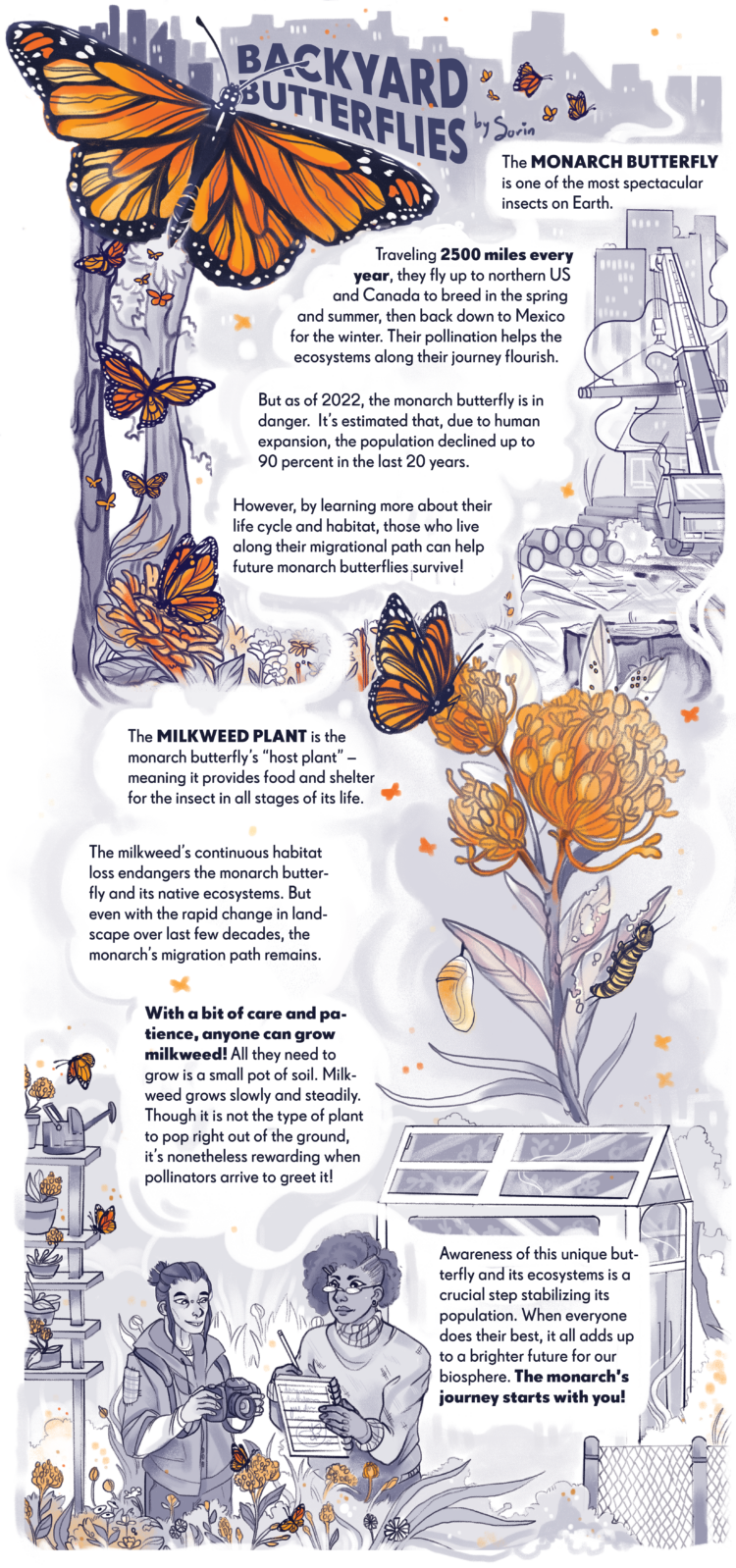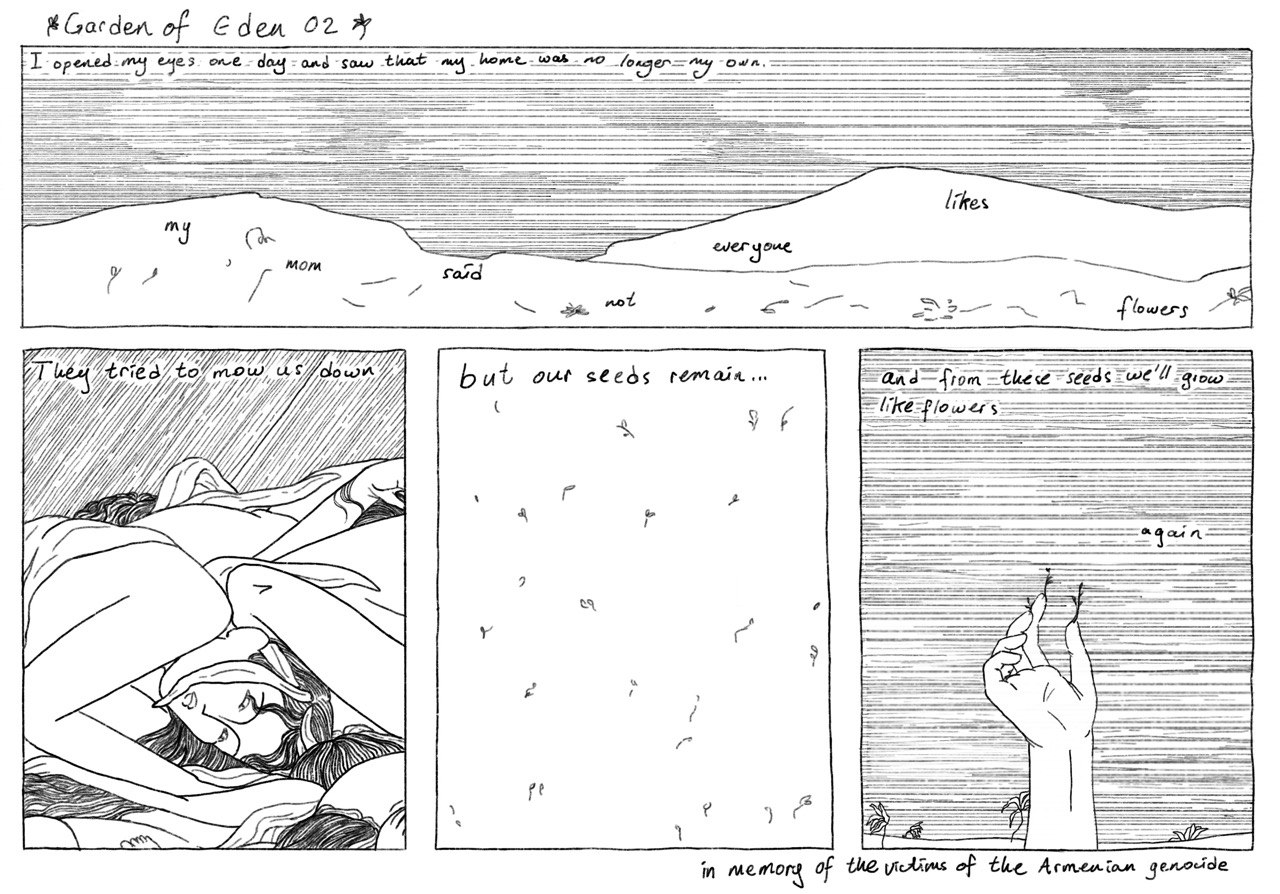
Transcript:
The monarch butterfly is one of many spectacular insects we share the planet with. With their amber, black-veined wings, their large summer gatherings are considered one of nature’s most beautiful spectacles. It’s no wonder that they spark curiosity in all who witness them!
They are most renowned for their long migration. Traveling 2,500 miles every year, generations of these butterflies fly up to the northern US and Canada to breed in the spring and summer, then back down to Mexico to hibernate during winter. The ecosystems across the migratory path benefit from them as pollinators and prey, and in turn create habitats suitable for them to feed, breed, and rest. This migration is key in the life cycle and conservation of these butterflies.
But the monarch butterfly is in danger. They’re recovering from the brink of extinction, after human expansion and colonization devastated much of their natural habitat. It’s thought that the monarch butterfly population declined up to 90 percent in the last 20 years. As of 2022, the species is still endangered.
Sustaining the monarch population is proving to be a big challenge for conservation efforts. However, by learning more about their life cycle and habitat, those who live along their migrational path can help future monarch butterflies survive!
The MILKWEED PLANT is the monarch butterfly’s “host plant” — meaning it provides food and shelter for the insect in all stages of its life.
The butterflies lay their eggs on the milkweed’s leaves during breeding seasons. Once they hatch, the tiny caterpillars feed on the leaves, growing bigger over the course of two weeks until they’re ready to transform. It will then attach itself to a leaf or stem with silk, change into a chrysalis, and undergo a mysterious metamorphosis over the course of 10 days. The newly-transformed butterfly will emerge from the pupa, stretch its new wings in the milkweed’s shelter, then continue on its long journey with the rest of the new generation.
The milkweed’s continuous habitat loss endangers the monarch butterfly and its native ecosystems. But even with the rapid change in landscape over the last few decades, the monarch’s migration path remains.
With a bit of care and patience, anyone can grow milkweed! Milkweed thrives in its native environments, including the eastern US and southern Canada. It is therefore best to source seeds locally: a feat made easier by conservation programs!
The plant flourishes in the spring and summer outdoors. Healthy milkweed soaks up around 4-8 hours of sunlight per day. All they need to grow is a small pot of soil. They can be competitive with one another, so it is best to give each their own space.
Milkweed grows slowly and steadily. Though it is not the type of plant to pop right out of the ground, it’s nonetheless rewarding when it blooms – even more so when pollinators arrive to greet it!
There are plenty of other ways to help these two species! Many communities, organizations, and educational institutions have community projects dedicated to tracking milkweed and monarch butterflies in the area. It’s helpful to record exactly when and where you see them – especially in urban spaces. This is helpful towards conservation efforts, as they will be able to know their populations in certain areas throughout the year. Plus, it’s always exciting to share such a rare sight with others!
Though there’s still a long way to go before the monarch butterfly species is stable, awareness of this unique butterfly and its ecosystems is a crucial step in doing so. When everyone does their best with the resources they have, it all adds up to a brighter future for our biosphere. The monarch’s journey starts with you!
References:







